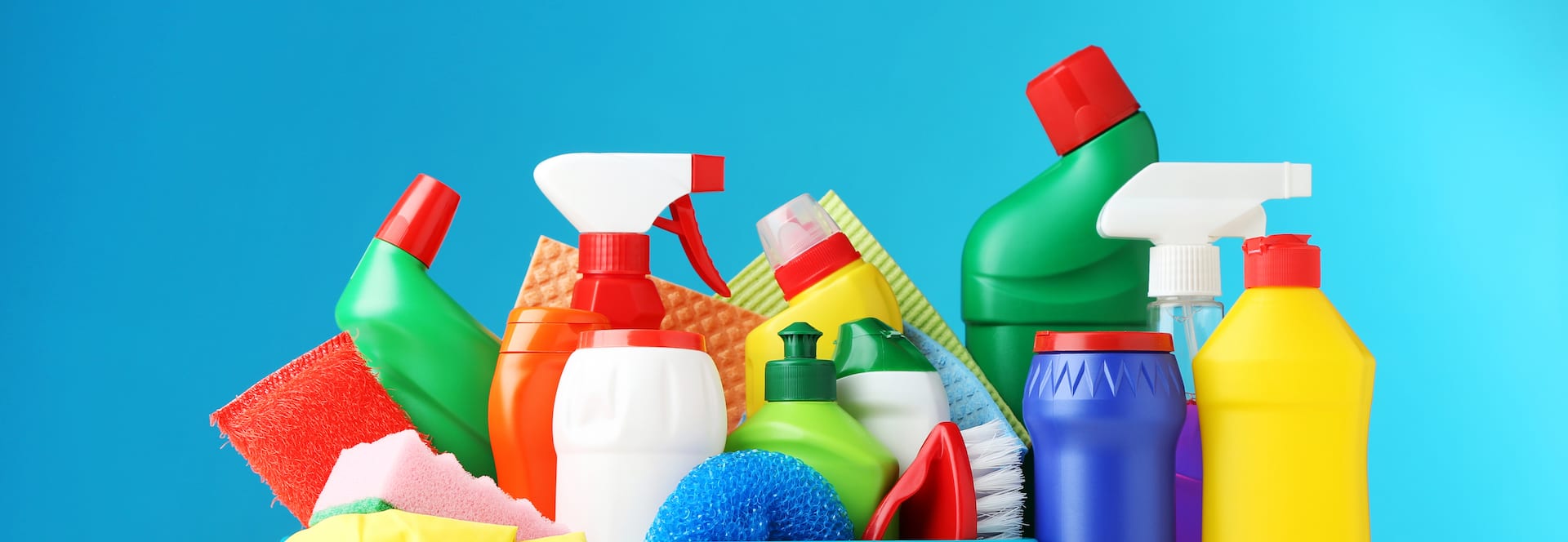
Many household cleaners are safe when used as directed. However, once they are mixed with other cleaners or they degrade as they get older, the properties may change. You may not even be aware of what chemicals are in your cleaner, as there are no federal guidelines for labeling these products. One promising sign is that many companies are now listing products on their website, and many states are requiring disclosure.
Chlorine Bleach
Bleach is its own cleaning product, but it can also be found in toilet bowl cleaners, mildew removers, and scouring powders. Chlorine bleach is an irritant to the respiratory system with mild exposure. It will exacerbate asthma and other respiratory disorders. At its worst, it can cause thyroid problems. Mixing bleach with vinegar or ammonia will cause deadly toxic fumes. Also, never mix bleach with other cleaning products.
Ammonia
Ammonia is found in many glass-cleaning products and polishing agents for silver and jewelry. It also is an irritant that will causes breathing problems. If it comes in contact with your skin, it can cause a chemical burn. Many housekeepers develop chronic bronchitis because of exposure to ammonia.
Formaldehyde
Formaldehyde is found in very low concentrations in many cosmetic products such as fingernail polish and hair smoothing products. It’s also found in many solvents, particle board, tobacco smoke, and mattresses. Exposure to formaldehyde can cause watery eyes, skin irritation, coughing, and wheezing. Long term exposure causes lung damage and impaired memory. It’s been suggested that cancer and leukemia result from overexposure to formaldehyde.
Antifreeze
Most adults realize that antifreeze is a toxic chemical. The problem is that it smells sweet, which is attractive to children and animals. Drinking ethylene glycol, a key component of antifreeze, causes serious brain damage, liver and kidney failure, and damage to other internal organs.
Sodium Hydroxide
Oven cleaners have very harsh and corrosive bases. The most common is sodium hydroxide, or lye. Lye causes chemical burns on the skin and in the lungs. If ingested, it is deadly. Even a small drop on the skin can cause irritation.
Acetone
Acetone is commonly used for fingernail polish remover, but it also is in many adhesives. It will cause you to be lightheaded, and create eye, throat, and nose irritation in small doses when inhaled. However, over time it can cause neurological, lung, or liver damage.
Phenols
Phenols are industrial chemicals found in detergents, hair products, and disinfectants. When inhaled, they cause respiratory irritations. If they are ingested, the results will be nausea and vomiting, and in extreme cases, coma and paralysis.
Chemicals lurk in many of the products you use every day and keep around your home. Therefore, it’s important to be diligent when using these products to protect yourself and your family. Even if they are labeled for everyday use, they still present dangers from overexposure. If you or your child has been diagnosed with chemical poisoning, call the W. Winston Briggs Law Firm. Learn how we can help you obtain maximum compensation for your injuries.